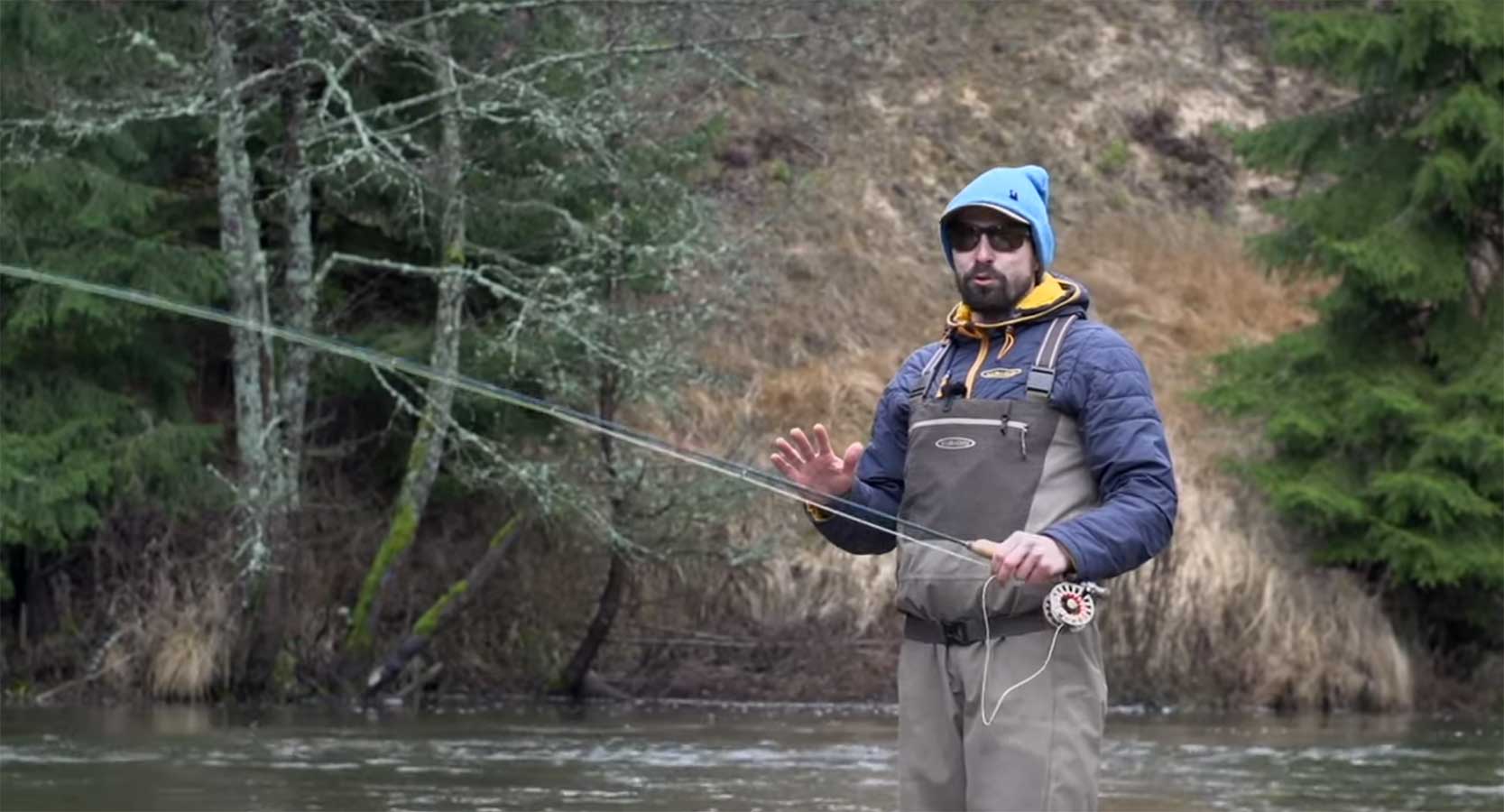How to Roll Cast | Fly Fishing 101
How Do I Roll Cast?
Learning how to roll cast is often one of the first lessons for a beginning fly angler. It’s a casting technique that anglers of all skill levels use on a routine basis. Even though it’s easy to learn, the roll cast works in a variety of situations. Whether you need to avoid branches or snags on your back cast, or you’re looking to land a fly in a tight window to an actively feeding trout, you’ll find a use for the roll cast.

A good roll cast should end with your rod tip slightly above horizontal.
How to Roll Cast – A 4-Step Guide
A roll cast works by using the tension between your fly line and the surface of the water to propel your line forward in a tight loop. This eliminates your back cast completely, as well as any false casting. Roll casts are most often used when fishing multiple flies at once, but are also effective when you have to cast in tight quarters and don’t have room for a full cast.
Executing a successful roll cast is accomplished by following these steps:
- Hold your hand high, parallel with your ear. Bring your rod hand up level with your ear. The key to an effective roll cast is getting the angles right. The motion of bringing your rod up this high ensures your roll cast starts and ends with the correct angles. Just like when you’re learning to execute a normal overhead cast, the position of your rod is critical here. If picturing a clock face helps you when casting, then your rod tip should be at 2 0’clock when you start a roll cast.
- Look where you want to cast. Fly casting, once you’ve mastered the basic mechanics, is an intuitive process – a lot like riding a bike. You don’t think about where you want your bike to go. You simply look, and the bike follows. Applying that same thought process to your casting will go a long way towards helping your flies end up where you want them.
- Push the rod forward and snap the wrist. This is the crux of the casting action – pushing the rod forward and snapping your wrist. As with anything in fly fishing, it’s easy to overdo this step by going too far forward, and snapping your wrist too hard. The key here is to remember that it needs to be one fluid motion, instead of two separate actions. As you raise your rod parallel with your ear and look where you want to cast, you forcefully push the rod forward. If you’re picturing a clock face, the rod tip should stop between 10 and 11 o’clock. Again, remember that this needs to be a single fluid motion.
- Hold the rod high. Finally, as you finish your cast, don’t let your rod tip fall too low. When you lower the rod tip, your cast won’t unroll above the water – it will unroll on the water. That ruins any subtle presentation you might be going for with a roll cast in tight water. It also increases the likelihood of tangling your flies, if you’re fishing with more than one fly.
Related Content: The Dynamic Roll Cast
What a Good Roll Cast Looks Like
To help you master the roll cast more quickly, it’s good to have a visual representation of what you’re trying to do. This video from Orvis teaches you how to roll cast. Pete Kutzer does a great job of explaining the various steps involved in successfully executing this technique.
If that video didn’t clear things up, you can always look at this resource from RIO as well.
Wrapping Up
As with anything else in fly fishing, learning how to roll cast takes effort and dedication. The payoff, though, is worth it. This simple maneuver will come in handy more often than you think. Spend some time practicing in your yard before heading to the water. You’ll be surprised at how simple it really is.










